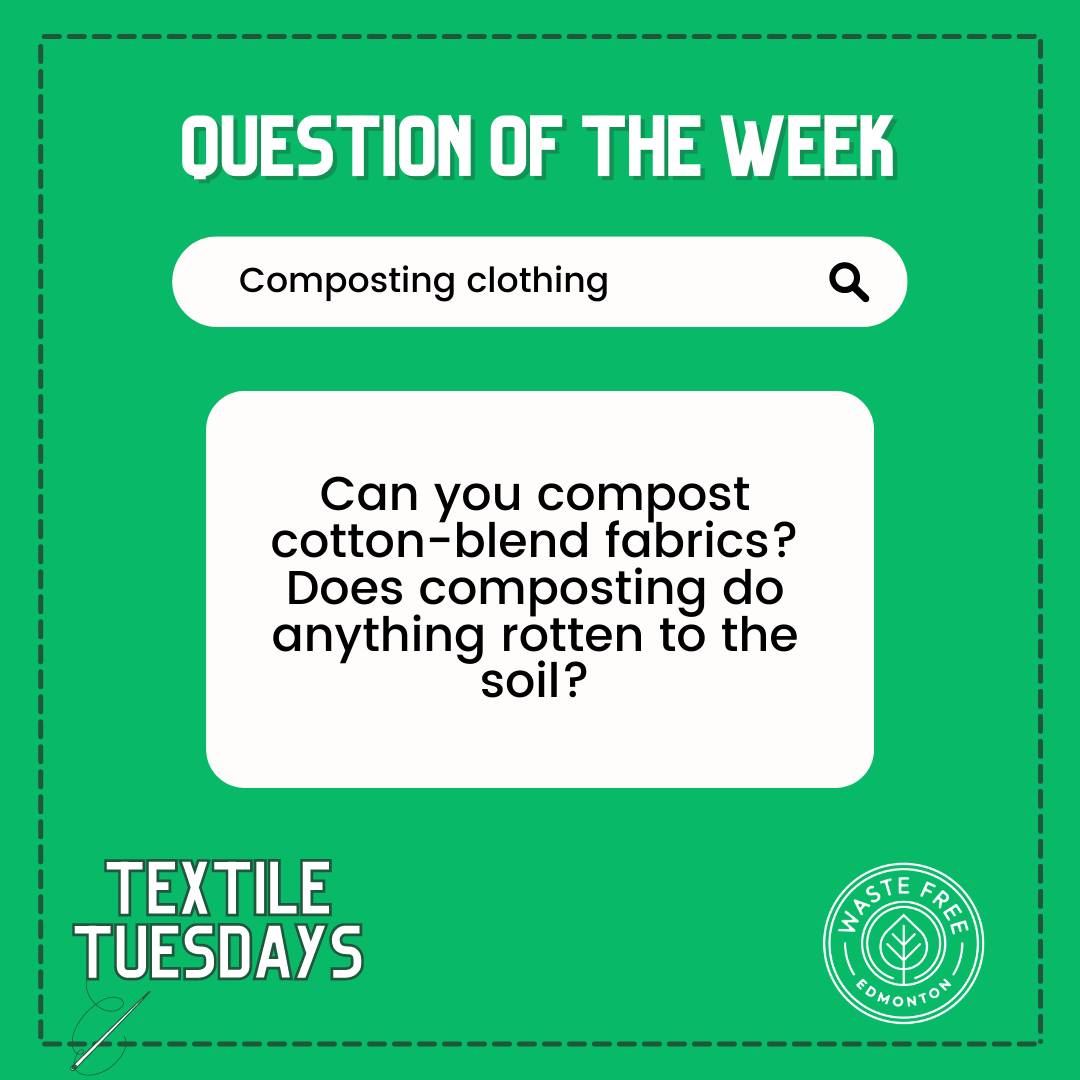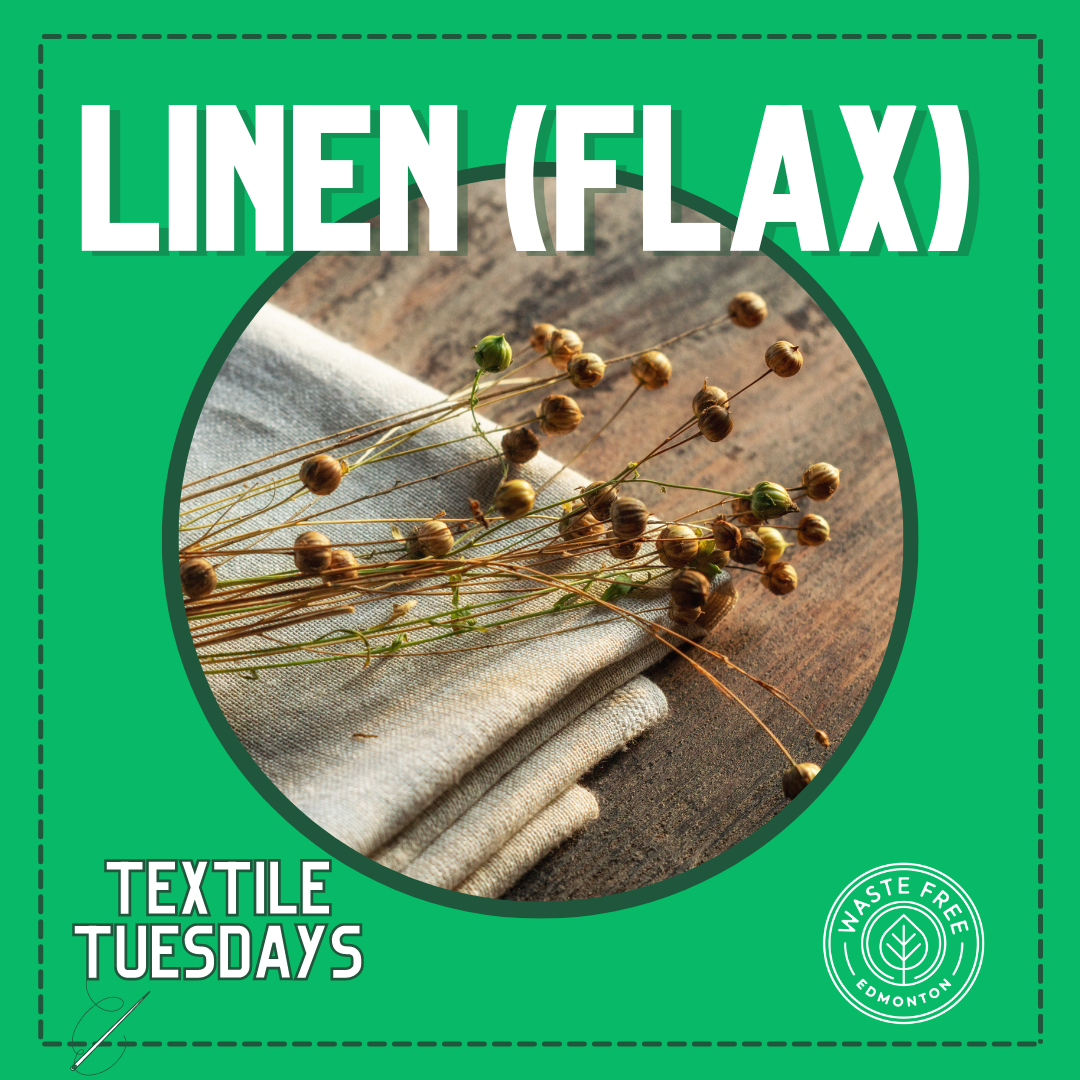Can you compost cotton blend fabrics? As with many questions around textile sustainability, the answer to this question is: it depends. While there are studies on the biodegradability of textiles (i.e. the ability to degrade or break down), less research has studied the compostability of textile products, which refers to the degradation of organic material specifically. Studies related to the biodegradation of textiles have found that both natural and synthetic fibres will degrade by microorganisms such as bacteria or fungi [1]. However, the breakdown of synthetic fibres can lead to microplastic/microfibre pollution, while natural fibres treated with certain dyes, chemicals, or finishes can slow down their rate of degradation [2]. These chemicals can also leach out of textiles as they degrade which could contaminate soil. Look for items with certifications like GOTS (Global Organic Textile Standard), OCS (Organic Content Standard), and bluesign to avoid these types of harmful substances.
Unfortunately, most textile items contain blended fibres such as cotton/polyester t-shirts, wool/acrylic sweaters, or cotton/polyester/spandex jeans, and use polyester thread for sewing. So, if you’re planning to add clothing or textile items to your compost, look for organic, natural materials and cut out seams if you want to avoid synthetics entirely. If your clothing or textile item is blended with synthetic fibres (e.g., polyester, spandex, acrylic), then it’s best to avoid composting these items since it may be difficult to remove these synthetic fibres or threads from your compost heap [3].
- Rana, S., Pichandi, S., Parveen, S., Fangueiro, R. (2014). Biodegradation Studies of Textiles and Clothing Products. In: Muthu, S. (eds) Roadmap to Sustainable Textiles and Clothing. Textile Science and Clothing Technology. Springer, Singapore. https://doi.org/10.1007/978-981-287-110-7_4
- Athey, S. N., Adams, J. K., Erdle, L. M., Jantunen, L. M., Helm, P. A., Finkelstein, S. A., & Diamond, M. L. (2020). The widespread environmental footprint of indigo denim microfibers from blue jeans. Environmental Science & Technology Letters, 7(11), 840-847. https://doi.org/10.1021/acs.estlett.0c00498
- https://www.compostthis.co.uk/old-clothes



